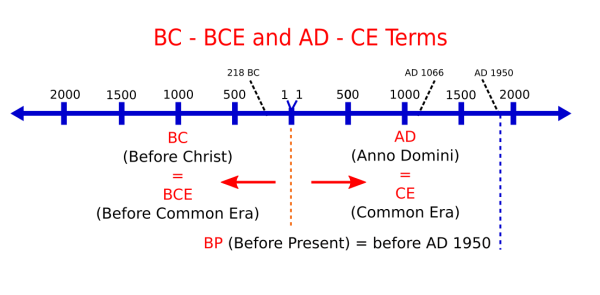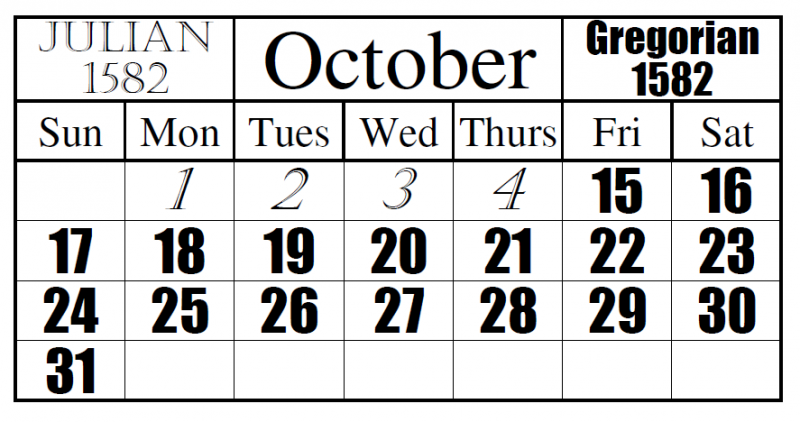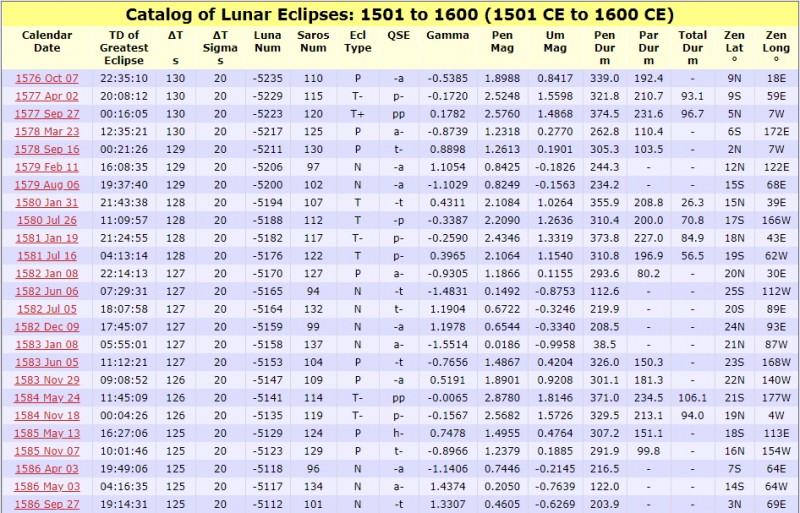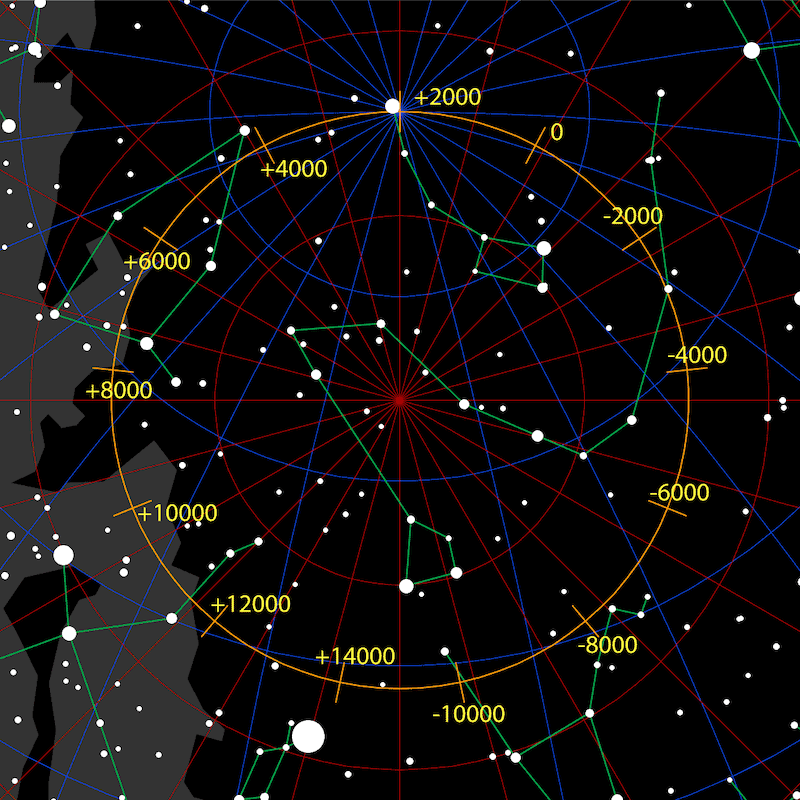
Like all things human, calendars evolve. We in the western world trace our calendrical roots to the old Roman calendar and the newer Julian calendar, proposed by Julius Caesar, a ruler of ancient Rome. We today use what is called the Gregorian calendar, named after Pope Gregory XIII, who introduced it in 1582. Nowadays, you sometimes encounter a date in the CE (Common Era) or BCE (Before Common Era) format. They’re just another example of the evolution of human time-tracking and mean exactly the same thing as AD (anno Domini) and BC (before Christ).
Simply put, BCE (Before Common Era) is a secular version of BC (before Christ).
CE (Common Era) is the secular equivalent of AD (anno Domini), which means “in the year of the Lord” in Latin.
According to TimeandDate, either designation is acceptable by the international standard for calendar dates, although scientific circles are more prone to using the BCE/CE format.
The 2024 lunar calendars are here! Order yours before they’re gone. Makes a great gift!
The use of the BCE/CE format has been found from manuscripts dating back to 1708, so this system has been in place, to some extent, for several centuries. BCE/CE have been in frequent use by Jewish academics for more than 100 years. The general acceptance of BCE/CE in science and academia has increased markedly during the first decades of the current century.

On the other hand, many media sites on the internet use the AP Stylebook as a guide to matters of style. And the AP Stylebook uses B.C. and A.D. rather than BCE and CE because, according to AP:
A.D. and B.C. are the more common and understandable abbreviations.
EarthSky, on the other hand, strives to use the BCE/CE format in part because it is associated with science, and in part because it is more neutral.
According to an article at Druide.com – a Quebec-based company that specializes in developing and marketing writing assistance software – there’s been some pushback on the use of BCE/CE:
The movement towards BCE/CE has not been universally accepted, and BC/AD is still more widely used, even though BCE/CE has been in the mainstream since the 1980s. There have been backlashes to the adoption of the new system in defence of BC/AD, notably in 2002 when the U.K. National Curriculum made the transition. In 2011, education authorities in Australia were forced to deny that such a change had been planned for national school textbooks amid a similar controversy triggered by media reports.
ThoughtCo.com – a reference site based in New York City – describes the pushback, too:
The controversy over whether to use AD and BC (or A.D. and B.C.) or CE and BCE (C.E., B.C.E.) when referring to dates burns less brightly today than it did in the late 1990s when the divide was fresh. With some rather heated debate, authors, pundits, scholars, and literary style masters took one side over the other. Decades later, they remain split, but the consensus seems to be that the decision to use one or the other is a personal or organizational preference. The same applies to the use of periods: use or don’t use them, based on personal or organizational preference.


The present-day Gregorian calendar is the product of several millennia of international cooperation, and most countries on Earth today use it.
The Julian calendar, the forerunner of the Gregorian calendar, replaced the old Roman calendar on January 1, 45 BCE (Before Common Era), or – if you prefer – on January 1, 45 BC (before Christ). Greek mathematicians and astronomers helped Julius Caesar reform the Roman calendar, essentially by adding a leap day at 4-year intervals to the 365-day Egyptian calendar. Of course, the first year of the Julian calendar was not called the year 45 BCE or 45 BC back then. Rather, it was 709 years after the founding of Rome, or the year 709 by the AUC (Ab urbe condita) numbering system.
In other words, 45 BCE/BC = AUC 709.
Then 44 years later, 1 BCE/BC would be synonymous with AUC 753.
The anno Domini dating system (BC/AD) was invented by the Christian monk Dionysius Exiguus in the year 525. We today often leave out the AD designation; you never hear someone say, for example, “I was born on July 18, 1980 AD.” But sometimes the AD is needed for clarity. If designated, AD often prefixes the year whereas CE follows the year. For example:
The dating system was invented by Dionysius Exiguus in AD 525.
The dating system was invented by Dionysius Exiguus in 525 CE.
By the way, there is no year 0 in the anno Domini dating system. The year 1 BCE immediately precedes the year 1 CE. Or, if you prefer, the year 1 BC immediately precedes the year AD 1. That’s why the years from 1 to 100 make up the 1st century (1 to 100), and the years from 2001 to 2100 comprise the 21st century (2001 to 2100).

Chronologists usually refer to dates before October 15, 1582, by the Julian calendar, and dates coming on and after October 15, 1582, by the Gregorian calendar. October 5, 1582, by the Julian calendar = October 15, 1582, by the Gregorian calendar. (The transition from the Julian to Gregorian calendar is shown in the above image.)
Let’s take Fred Espenak’s Six Millennium Catalog of Lunar Eclipses (3000 BCE to 3000 CE) for our example, as we display below. The year 1582 had four lunar eclipses (January 8, June 6, July 5 and December 9, 1582). The dates for the year’s first three lunar eclipses are Julian calendar dates whereas the final lunar eclipse is dated by the Gregorian calendar.

For astronomical computing, astronomers often find it easier to remove these designations altogether. The year 1 BCE/BC is instead regarded as the year zero (0). The years following 1 BCE/BC are given by a plus sign (+), and the years before 1 BCE/CE by a minus sign (-). Therefore, the year 1 CE or AD 1 is numbered +1, the year 1 BCE/CE has a zero number (0); consequently, 2 BCE/BC is numbered -1, the year 3 BCE/BC is numbered -2, and so on and so forth. This system is illustrated below:

Bottom line: CE (Common Era) and BCE (Before Common Era) mean the same thing as anno Domini (AD) and before Christ (BC).
Read more from TimeandDate: Common Era (CE) and Before Common Era (BCE)
Read more from Druide.com: BC and AD, BCE and CE, what’s the difference?











